- Giorgio Daidola
- TELEMARK
- 0 likes
- 947 views
- 0 comments

The many lives of telemarking
By Giorgio Daidola
It doesn't seem real to me. It has been more than 40 years since I first tried the genuflected turn. It was the spring of 1982. There was nothing more dead and buried in the Alps than telemark. Few had mourned him even though he was the first to enable people to enjoy the wonders of skiing in the early twentieth century. For me it was love at first sight. After so many years of alpine skiing I felt the need for a return to my roots, for more natural and less technological skiing, for a more intimate relationship with the snow. My source of inspiration were the photos of my great father genuflected on the snows of Clavière and Passo Rolle in the 1920s and Ettore Santi's “Manual of Skiing, to save the skier and the skier” from 1949, with those wonderful photos of the purest tracks that only telemark can draw on snow.
Confirming that the time was ripe for a second “avatura” of telemark came in 1984 to the editors of the “Dimensione Sci” yearbook the made-in-U.S. articles “Ski Revolution” by Lito Tejada Flores and made-in-Canada “Kneel and Ski” by Pat Morrow. And, a few years later, in 1991, that piece by John Falkiner destined to become a mantra entitled, “ Free your heels, free your mind.” In North America, telemark skiing had been rediscovered a decade earlier than in the old continent by young skiing hippies, mainly due to the large number of Norwegian immigrants who had never had never abandoned telemark skiing. To demonstrate the superiority of the genuflected curve, the novice telemark “ski bums” tried their hand on the slopes at 45º of the underground station at Crested Butte in Colorado. Rick Wyatt came heel-free down the Grand Tetons, an extreme skiing premiere by Bill Briggs in June 1971...If everyone agreed in the New World on the superiority of telemark for big ski traverses, such as example that of brothers Brad and Randall Udall along the 230-mile Muir Trail in the California Sierras, not everyone was as far as these performances on steep slopes that, without taking any credit away from those who did them did them, were considered by some to be the equivalent of shenanigans: so indeed, Lou Dawson, the historical mind of American ski mountaineering, presents them in his 1997 volume “Wild Snow.” It should be noted, however, that the debate over “telemark condemnation” or ‘telemark defense’ was not new in the United States had been proposed in the Colorado Mountain Club newsletter since the the 1930s. It faded only with the entry into the American market of the new lightweight European hard ski mountaineering equipment of the late 1990s, in particular the Tourlite binding by engineer Barthel marketed by Dynafit that relegated telemark to station skis. Be that as it may, for those who had believed since the 1980s as the writer in the pleasures of the genuflected curve, there followed wonderful years of discovering the telemark's potential for research ski mountaineering, making it the ideal style for trips to distant mountains and, last but not least, forging new and lasting international friendships. The Skieda in Livigno and other events starring the genuflected curve thus became true pilgrimages. I particularly remember that year in when people arrived in Livigno with skis on their feet from several directions with real ski-mountaineering traverses, thus giving the ski week that one was about to experience the significance of a great ski trip. Among those travelers was also a nice guy from Bologna, a certain Paolino Tassi, then with long hair, who had not yet become the famous telemark-conscious mountain guide and the protagonist with John Falkiner of the beautiful film “The Wings on the Feet” by Fulvio Mariani.
In 1988 he arrived in Courmayeur from Norway, where telemark had never gone completely into hibernation, a handsome, nice young skier and superbly gifted skier named Morten Aass. Morten was destined to cause a remarkable leap in the quality and attractiveness of the genuflected curve . He had been invited by Stefano De Benedetti, who in those years had reached his maturity as an extreme skier, to star in “The time machine,” the fiction conceived by Stefano and destined to become a reference point for all skiers eager to discover the new way of skiing. That with the telemark you could do anything, and with equipment as primordial as that of the time (skis little wider than cross-country skis and 205/210 cm long, boots leather, cross-country-type three-pin bindings), Morten demonstrated this very well in the film, which begins and ends with the telemark descent of the South of the Grandes Jorasses, first skied by Sylvain Saudan in 1971. Then, as often happens to all things beautiful and free that seem destined for well-deserved success, someone tried to normalize even the telemark with rigid instructional progressions similar to those of skiing with locked heels. Parallel to the United States and Canads, there thus developed in Europe a telemark that found in the station skiing of damerini masters and in competitive skiing, its raison d'être. The firms producing the equipment, mostly Italian, went along with this trend. Thus was born a new telemark similar in philosophy and practice to skiing downhill skiing, with the use of skis, bindings and boots for which the variables weight, simplicity and comfort were completely neglected. The gap with with ski mountaineering equipment became even greater in sion, due to the considerable advances made for the latter in rigid descent with rigid descent with heel, with bindings, and with increasingly efficient and lighter boots.
To be fair, considerable progress was also made for telemark during those years, in terms of weight and essentiality, with ATK's Newmark bindings, which were not understood, however, while the boots were not understood, however, while the boots became heavier and stiffer, to accommodate and stiffer, to accommodate the needs of the piste riders. Thus it was that the reborn reborn telemark of the 1980s remained confined to a small niche of loyalists, established yes, but with great difficulty in renewing itself. The adherents of this this niche, however, never stopped believing that a curve so rich in appeal rich in appeal would not, sooner or later, find the possibility of a new “avatura.”
It would take an enlightened and courageous company to solve the problem of the boot's weight and efficiency. To solve the problem of trunk weight and efficiency. Once again it was Calzaturificio Scarpa that took up the challenge, to invest in making revive the true fascination of free-heel skiing. Scarpa had already accompanied the telemark in the difficult and dangerous evolutionary transition from the leather boot to the plastic one. The new Scarpa TX PRO is not is as light as dreamed, but it must be admitted that in telemark the materials are subjected to significantly more wear and tear than in skiing with locked heels, so sturdiness should definitely not be overlooked. The weight savings over previous boot monuments is nevertheless appreciable. May this be the new evolutionary push that was missing to make the reborn, this time again in the right direction, the heel-to-toe curve blocked? Along with the undeniable ones of the lightweight, high-performance bindings Meidjo, Lynx and Kreuzspitze? Who has held on through the years without being attracted by the many sirens inviting a return to ski mountaineering at locked heels on the descent can only answer yes. Because telemark is not fashion or even exhibitionism but a way of experiencing skiing that is not only has no age but is for all ages. Even for the elderly like the writer, being that the genuflected turn is much safer and more natural than the heel-to-toe locked. Gelemark is above all “easier to turn on deep snow.” as Ettore Santi wrote on page 83 of his book. With telemark skiing you return in short, to skiing as well as walking. You rediscover forgotten values such as slowness and gentleness. To do so, one only needs to follow the easy advice of those who of the telemark has understood everything there is to understand: I am referring to a refined skier like Luca Gasparini, the soul of the Telemark Journal, the magazine international that is a real book because it is published when ... it is ready! Telemark, says Luca, is easier than parallel Christianity: you just have to try and understand the “magic” of the knee instinctively setting the curve “without doing anything” to eliminate any temptation to return to the repetitiveness of the modern rigid skiing. All this is not enough, however, to ensure that telemark does not die another time.
A further challenge, so far gone wrong, awaits the genuflected curve, and it is the most important one. It involves proposing to children the “bendy step” as the most suitable form of natural skiing for learning to ski. Not surprisingly on purpose The problem to overcome to achieve this goal will be once again the boots. The models for small children that were proposed some twenty years ago on the market were unfortunately not as successful as they would have deserved deserved. Blame perhaps for misguided marketing and a lack of appreciation of the proposal by ski schools. The best gift that Scarpa gave me 25 years ago was a handmade leather telemark boot handmade for my two-year-old son. A real jewel that is now beautifully displayed on the walls of the house, as a reminder of a very important choice.
Frassilongo, February 26, 2024
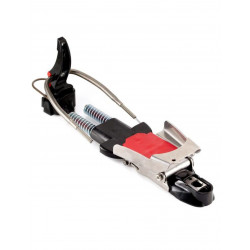

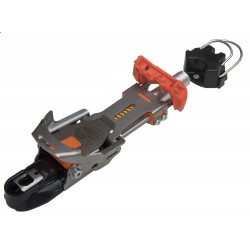

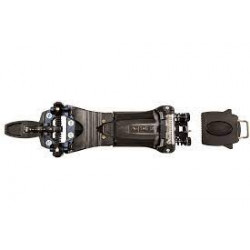

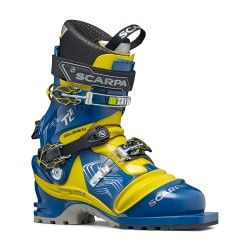



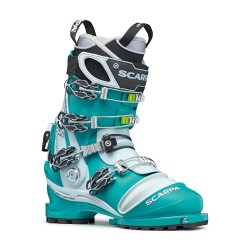



Comments (0)